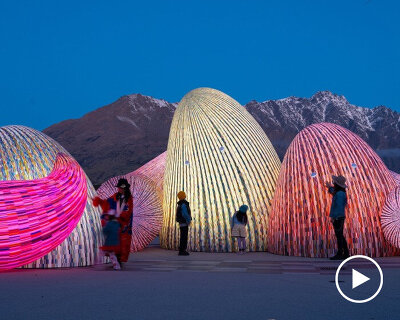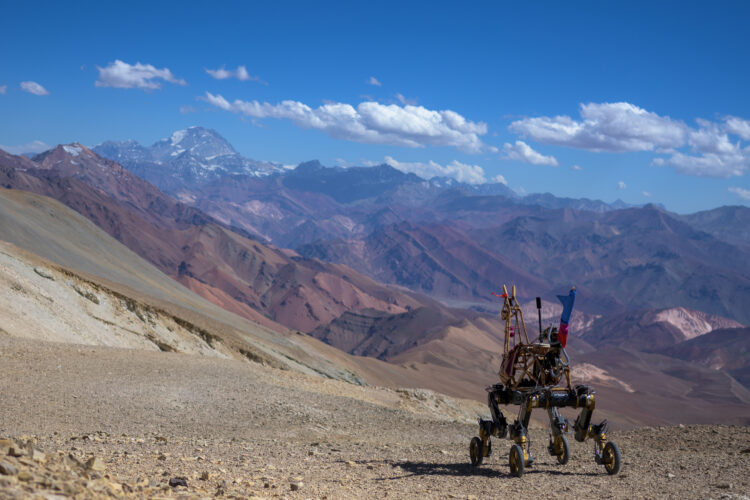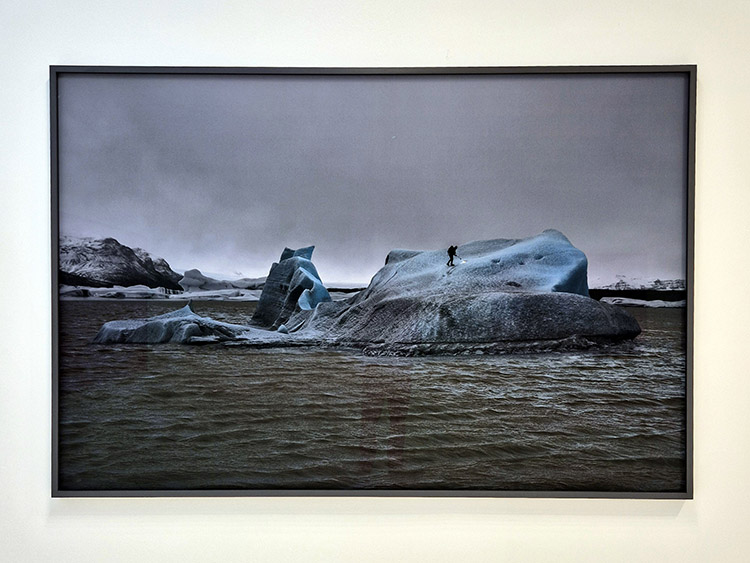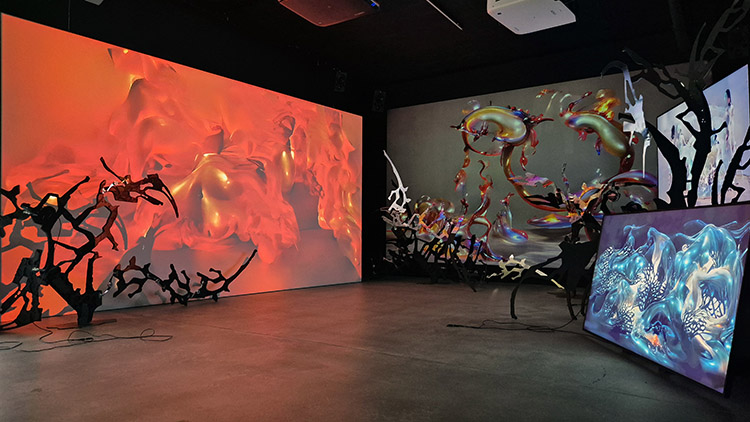
Vue lecture
The Collapse of a Microcosm – Sensory ecology that remembers

« Videoplace », l’histoire folle de la première œuvre en réalité augmentée

CO-EXIST: China Pavilion at the 19th Venice Architecture Biennale

Discerning the Silent Presence – Authenticity and Artifice

Venice Immersive : on connaît la programmation de l’édition 2025

Premier contact : Alice Bucknell en 3 infos essentielles

« Une journée à l’Opéra », une immersion inédite à Nice ?

Support → Join the Community

Dioramas – itsgalo

The Voyeur Of Utter Destruction (As Beauty)

Generations – ciphrd

reversediffusion.xyz – A reversed perspective on generative AI

Felipe Castelblanco: Counter-Expeditions

Ecologies of the Machine: Landscapes of Cement and Power

Ondes sonores : perspectives de la Conférence des Nations Unies sur les océans de 2025

Publié le 2 juillet 2025 par Lyndsey Walsh
De multiples perspectives scientifiques, artistiques et culturelles sur le rôle du son dans les environnements océaniques ont été présentées lors de l'UNOC 2025.
Soyez prêts : la Biennale Némo revient la tête pleine d’illusions !

Support → Join the Community

À la Fondation Vasarely, Lucien Bitaux part à la recherche d’un temps ancestral

Dioramas – itsgalo

« Le Rayon extraordinaire », la belle exposition de Flavien Théry et Fred Murie

Le jour où le Centre Pompidou a consacré le Net.art

Who needs art in times like these? Cutting Edge: Running against the virtual wall A Robot’s Liberation Words as Weapons Sound as...

Amid global crises and radical upheavals, the Ars Electronica Festival asks what role art can play—as a catalyst for new perspectives, as a space for reflection, and as a driving force for a collectively shaped future.
In “Run Motherfucker Run,” the body becomes the controller: those who run experience virtual immersion—those who stop fall. A powerful critique of passive consumption in digital worlds.
Guanaquerx by Paula Gaetano Adi, winner in the Artificial Life & Intelligence category 2025, reclaims the Andes as a site of resistance and reimagines robotics as a tool for planetary liberation.
Requiem for an Exit by Frode Oldereid and Thomas Kvam, winner of a 2025 Golden Nica, explores memory, violence, rhetoric, and the unsettling voice of a machine.
This year’s Golden Nica in the category “Digital Musics & Sound Art” goes to media artist Navid Navab and Garnet Willis for their project “Organism.”
„Das Ziegenkäsemachen aus der Sicht der Ziege“ (Goat Cheese Making from the Perspective of the Goat) reveals the digital overload, the dependency on algorithms, and the longing for liberation. It is a film that understands art as a radical scream against mindless, endless media consumption and indifference.
SHARESPACE explores new forms of collaboration between people, avatars, and AI in hybrid spaces. The focus is on connection, participation, and creative interaction, accompanied artistically by Ars Electronica Futurelab. One space, infinite possibilities.
In this issue, Horst Hörtner presents a project that shows how art, technology, and participation can come together: the Klangwolke 2012, in which swarms of drones were used for the first time and thousands of people became part of the production.
The LAS Art Foundation’s Sensing Quantum project has been awarded the S+T+ARTS Grand Prize – Innovative Collaboration for its groundbreaking work in developing new pathways into quantum technology through immersive experiences and interdisciplinary collaboration.
Beaubourg : 5 expositions d’art numérique qui ont marqué l’histoire du Centre Pompidou

Cutting Edge: Running against the virtual wall A Robot’s Liberation Words as Weapons Sound as a living process Algorithm meets G...

In “Run Motherfucker Run,” the body becomes the controller: those who run experience virtual immersion—those who stop fall. A powerful critique of passive consumption in digital worlds.
Guanaquerx by Paula Gaetano Adi, winner in the Artificial Life & Intelligence category 2025, reclaims the Andes as a site of resistance and reimagines robotics as a tool for planetary liberation.
Requiem for an Exit by Frode Oldereid and Thomas Kvam, winner of a 2025 Golden Nica, explores memory, violence, rhetoric, and the unsettling voice of a machine.
This year’s Golden Nica in the category “Digital Musics & Sound Art” goes to media artist Navid Navab and Garnet Willis for their project “Organism.”
„Das Ziegenkäsemachen aus der Sicht der Ziege“ (Goat Cheese Making from the Perspective of the Goat) reveals the digital overload, the dependency on algorithms, and the longing for liberation. It is a film that understands art as a radical scream against mindless, endless media consumption and indifference.
SHARESPACE explores new forms of collaboration between people, avatars, and AI in hybrid spaces. The focus is on connection, participation, and creative interaction, accompanied artistically by Ars Electronica Futurelab. One space, infinite possibilities.
In this issue, Horst Hörtner presents a project that shows how art, technology, and participation can come together: the Klangwolke 2012, in which swarms of drones were used for the first time and thousands of people became part of the production.
The LAS Art Foundation’s Sensing Quantum project has been awarded the S+T+ARTS Grand Prize – Innovative Collaboration for its groundbreaking work in developing new pathways into quantum technology through immersive experiences and interdisciplinary collaboration.
Artificial Intelligence is changing how we perceive art. Projects such as the Waltz Symphony show how AI can enrich creative processes, as long as humans set the direction. But not everyone is convinced; some fear the loss of originality.
L’œuvre du jour : « TROPICS » de Mathilde Lavenne

Courtyard of Detachments : A new configuration of the Hong Kong exhibition at the 60th Venice Biennale

A Robot’s Liberation Words as Weapons Sound as a living process Algorithm meets Goat Cheese Stories of self-determination A spac...

Guanaquerx by Paula Gaetano Adi, winner in the Artificial Life & Intelligence category 2025, reclaims the Andes as a site of resistance and reimagines robotics as a tool for planetary liberation.
Requiem for an Exit by Frode Oldereid and Thomas Kvam, winner of a 2025 Golden Nica, explores memory, violence, rhetoric, and the unsettling voice of a machine.
This year’s Golden Nica in the category “Digital Musics & Sound Art” goes to media artist Navid Navab for his project “Organism.”
„Das Ziegenkäsemachen aus der Sicht der Ziege“ (Goat Cheese Making from the Perspective of the Goat) reveals the digital overload, the dependency on algorithms, and the longing for liberation. It is a film that understands art as a radical scream against mindless, endless media consumption and indifference.
The HEROINES project shows how citizens can help shape social change through research. In 2025, it was awarded the European Union Prize for Citizen Science.
SHARESPACE explores new forms of collaboration between people, avatars, and AI in hybrid spaces. The focus is on connection, participation, and creative interaction, accompanied artistically by Ars Electronica Futurelab. One space, infinite possibilities.
In this issue, Horst Hörtner presents a project that shows how art, technology, and participation can come together: the Klangwolke 2012, in which swarms of drones were used for the first time and thousands of people became part of the production.
The LAS Art Foundation’s Sensing Quantum project has been awarded the S+T+ARTS Grand Prize – Innovative Collaboration for its groundbreaking work in developing new pathways into quantum technology through immersive experiences and interdisciplinary collaboration.
Artificial Intelligence is changing how we perceive art. Projects such as the Waltz Symphony show how AI can enrich creative processes, as long as humans set the direction. But not everyone is convinced; some fear the loss of originality.
TAKKUUK : une traversée immersive aux confins de l’Arctique]

The Voyeur Of Utter Destruction (As Beauty)

À Bruxelles, iMAL fête ses 25 ans avec une exposition « introspective »

Ceren Arslan : de la beauté des architectures oniriques

Art et médias à Bâle
Les actrices et acteurs du monde de l’art ont pour habitude de se retrouver en juin à Bâle à l’occasion de sa foire. L’opportunité pour les institutions et fondations entre autres événements collatéraux de soigner tout particulièrement leur programmation.

A Art Basel, les œuvres de grande taille sont rassemblées au sein de l’exposition Unlimited du Hall 1 où il arrive parfois que des galeries s’associent pour présenter un même artiste, comme c’est le cas avec les Pace et Thaddaeus Ropac avec l’installation de Robert Longo We are The Monsters. Celle-ci s’articule autour d’un film rassemblant des dizaines de milliers d’images d’information datant de ces douze derniers mois. Force est de constater que le climat politique international pèse sur l’événement où les prises de position, et plus encore les silences, font débats.

C’est davantage de climat atmosphérique dont il est question au sein du Hall 2 sur le stand de la galerie Labor où l’œuvre en temps réel Cloud Gazing de Yuri Pattison simule des nuages en totale cohérence avec ceux présents au même instant dans le ciel de Bâle. C’est en observant l’atmosphère que depuis toujours nous tentons de prédire l’avenir avec une précision qui s’améliore au rythme de l’accroissement des puissances de calcul, en cette ère de l’émergence d’une informatique quantique !

Parmi les artistes contemporains à l’honneur actuellement à la fondation Beyeler, Wade Guyton s’exprime ainsi sur le mur de la salle qui lui est dédiée : « Ce qui m’intéressait, c’était la manière dont on peut faire une peinture sans être peintre ». Car ce sont bien les créations d’une époque de productibilité mécanique extrême qui y sont accrochées. Ses références étant picturales plus que photographiques, c’est par couches que Wade Guyton aborde ses pièces, mais à l’écran, avant d’en confier la production à des traceurs grand format.

De son côté, le Musée Tinguely présente une exposition personnelle temporaire de Julian Charrière. Intitulée Midnight Zone, elle place le spectateur en immersion au sein de l’univers que l’artiste déploie des salles obscures en salles lumineuses, comme celle où sont présentés trois tirages de la série The Blue Fossil Entropic Stories où l’artiste s’en prend à un iceberg au chalumeau. On comprend que le réchauffement climatique est de notre responsabilités à tous au quotidien. Car s’il ne vient à personne l’idée de faire fondre sciemment la banquise, c’est pourtant ce que nous faisons depuis là où chacun d’entre nous se trouve en consommant de manière irraisonnée.

Dès l’entrée de la fondation Laurenz Schaulager, le public est une nouvelle fois plongé en immersion, par l’artiste Steve McQueen qui explique : « Ce que j’aime dans la lumière et le son, c’est qu’ils sont tous deux créés par le mouvement et la fluidité ». La quasi-totalité du monument baigne dans une lumière dont la couleur change imperceptiblement. A la mesure de notre monde qui, toujours, est en mouvement bien qu’il faille parfois prendre un peu de recul pour s’en apercevoir. Quant au son, c’est celui d’une guitare basse qui, lentement, égrène des notes amplifiées, ce qui a pour effet de ralentir nos déplacements dans l’espace de la fondation ainsi métamorphosé temporairement pour cette exposition tout simplement intitulée Bass.

Enfin, à la Haus der Elektronischen Künste, l’exposition D’autres intelligences présente l’installation immersive Between the Waters que les artistes du duo Crosslucid ont conçue et réalisée avec des intelligences artificielles génératives. Il y a de réelles correspondances entre ce qui est sculpté – à l’extérieur des images – et ce qui est généré – présenté en projection. De cet univers résolument organique convoquant le surréalisme se dégage une inquiétante étrangeté qui a été pensée par le duo en dialogue avec leurs machines. Car les artistes, depuis toujours, ont une appétence pour les outils, techniques ou technologies de leur temps.
Article rédigé par Dominique Moulon pour TK-21.
Art numérique : quelles sont les 10 expositions à voir en juillet 2025 ?










